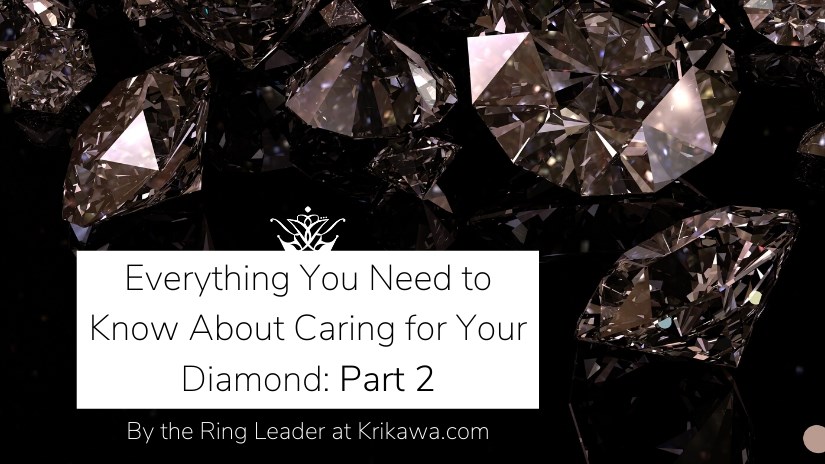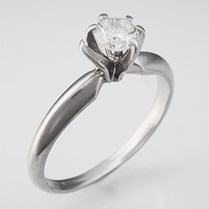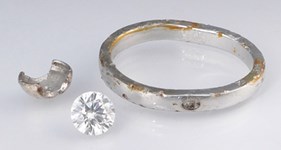
Aug 23, 2014
Caring for Your Diamond: Part II

LISA

Diamond Engagement Ring with Bent Prongs
Know when to remove it.
Yes, your engagement ring is designed for everyday wear, but that doesn't mean it should go everywhere with you. Engagement rings are built to withstand most chores, like making the bed or mopping floors. However, there are situations where it is best to take your ring off. If you’re gardening, or going to expose your ring to something heavy, like rocks, or something made of steel, like barbells or pots and pans, best remove it beforehand. While you’re not at risk for damaging your diamond, you could dent the metal band or prongs, or even knock a stone loose during heavy duty tasks.Always dry it off.
Whenever you get your diamond wet—washing hands, taking a bath, doing dishes—take an extra second and dry it off. That’s because any time the wet stone air dries, it’s left with a tiny bit of residue that, over time, could dull the sparkle. I’m a big fan of drying with a quick blast of the hairdryer, or when I’m out, running my ring under the automatic hand dryer for a cycle.
Bonus tip: If you’re hitting the pool or jacuzzi, be sure to remove any white gold jewelry beforehand. Over time, repeated exposure to the chemicals can corrode the metal.

Engagement ring that fell into the garbage disposal!
Be smart about storage.
Just like in real estate, location is everything when it comes to deciding where to stash your jewelry. Your ring deserves a safe landing place whenever it comes off. One of the worst things you can do is leave a ring on the counter, the edge of a sink, or dresser--places where it can easily fall, get knocked into the sink and down the drain, or (worst case) go down the garbage disposal. Yes, I've seen it happen and it's not pretty.
Instead, invest in a dedicated stand or bowl where you can safely store your pricey pieces.
Have it insured.
Your diamond may be priceless to you, but it still has a monetary value and it should be protected. Diamonds aren't cheap and the cost of replacing a damaged, lost or stolen diamond may be much more than you paid the first time. Protect your diamond ring by insuring it, either through your homeowner’s insurance or on a separate rider. (I recommend Jeweler’s Mutual.) A policy doesn’t cost much, but the peace of mind it offers is priceless. And since diamonds consistently increase in value, have yours appraised every five years and bump up coverage as needed.
Schedule professional checkups.
Even if your ring looks fine to the naked eye, it’s smart to have it checked by a professional once or twice a year. Jewelers can inspect prongs for wear, check stone stability, and clean the ring with tools that reach areas you can’t. It’s a quick appointment, but it could save you from losing a stone or wearing down your setting without realizing it.
Diamonds may be forever, but they still need a little help staying brilliant. With a few simple habits—removing the ring at the right times, drying it, storing it properly, and insuring it—you’ll protect both its beauty and its value for decades to come. Because when something is that precious, it deserves to be treated like treasure.




YOUR OPINION MATTERS